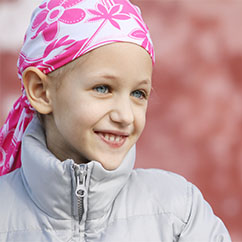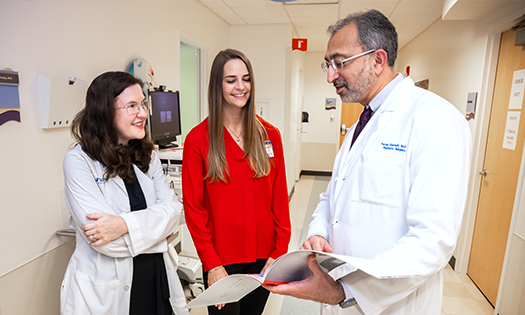Obstructive sleep apnea (OSA) is highly prevalent among children with Down syndrome. The resulting sleep deficit can negatively impact behavior, learning and communication and lead to serious health issues like heart disease down the line.
Traditional treatments, like removing the tonsils and adenoids or CPAP, show limited improvement or are not well-tolerated by many children in this patient population. The risk/reward of current surgical strategies on the tongue, palate or airway may help but not resolve OSA: These procedures often incur a high degree of morbidity without fully and effectively addressing the problem.
Inspire therapy offers a much more effective, far less invasive alternative. This surgical solution includes implanting a remotely controlled device near the collarbone that produces a gentle electrical pulse. When activated, the device stimulates the hypoglossal nerve that controls tongue movement to keep the tongue pushed forward and the airway open during sleep.
In 2023, after about 10 years of successful use in adults with OSA, the U.S. Food and Drug Administration extended approval of Inspire to adolescents ages 13 to 21 who have Down syndrome and moderate to severe OSA, but whose sleep issues did not improve with first-line treatments.
Children’s Medical Center Dallas, part of Children’s Health℠, is participating in two multisite, NIH-funded studies to explore expanding the pediatric inclusion criteria for this treatment approach. In addition to being the only pediatric health system in Texas and surrounding states that provides Inspire to pediatric patients, Children’s Health is able to treat children as young as 10 who meet the study requirements.
“Improving a child’s quality of life and success in daily activities are the ultimate goals of resolving their sleep issues,” says primary investigator of the NIH studies Ron Mitchell, M.D., Pediatric Otolaryngologist (ENT), Division Director at Children's Health and Professor at UT Southwestern. Dr. Mitchell is also Chief of Pediatric Otolaryngology and the William Beckner, M.D., Distinguished Chair in Otolaryngology at UT Southwestern. He adds, “We’re seeing improvements in our patients’ behavior, communication and school and social performance. It’s very exciting because many children were not experiencing much benefit from existing treatments.”
Why it matters: High prevalence of OSA among youth with Down syndrome
OSA is extremely common among children with Down syndrome for a variety of reasons, including craniofacial makeup, low muscle tone, enlarged tongue and narrowed airway. In addition, many children with Down syndrome become overweight as they reach adolescence, which increases the likelihood of OSA. As many as 3 in 4 children with Down syndrome experience some level of OSA.
“We recommend that community physicians who see children with Down syndrome ask about sleep as part of their standard well-child checkup,” Dr. Mitchell says. “Sleep is so important to one’s health and well-being – and makes such a difference to both the child and their family.”
If OSA is diagnosed during a sleep study the first line of treatment is to remove the child’s tonsils and adenoids. The next line of treatment is CPAP, though many children don’t tolerate it due to the pressure, noise and face mask. Although some children experience relief from these treatments, their sleep issues tend to persist and even worsen over time. By comparison, Inspire therapy is well tolerated and consistently shows a high reduction in sleep apnea events.
What to know: How Inspire Therapy works
The surgery to implant an Inspire device takes about two hours and entails two incisions of about 5 centimeters each, one below the jawbone and one in the chest near the collarbone. Children’s Health keeps patients overnight for monitoring and they are typically discharged the next day.
“We don’t activate the device for about a month after it’s implanted. Then we start with a very low activation and increase it over time,” says Seckin Ulualp, M.D., Pediatric Otolaryngologist at Children’s Health and Professor at UT Southwestern. “Every patient is different, and we’re looking for the lowest effective pulse so kids can have a comfortable sleep.”
Once at home, a remote control is used to turn the device on and off. The patient, a parent or other caregiver turns the device on at bedtime and off in the morning. An app tracks sleep goals, and the family can choose to share the data with a child’s doctor.
Who’s eligible and what’s next?
The FDA’s criteria for referring a child with Down syndrome for Inspire therapy is currently:
Ages 13 to 18
Diagnosis of severe obstructive sleep apnea (between 10 to 50 events per hour)
Tonsils and adenoids have been removed or are very small and not a surgical target
Tried and did not have success with CPAP
One of the clinical trials Dr. Mitchell is leading is an 8-site study evaluating Inspire therapy’s effects on cognition and expressive language for children with Down syndrome as young as age 10. The other study evaluates patients ages 18 to 21 who don’t have Down syndrome to see if Inspire is indicated for them. Within the next two years Dr. Mitchell expects to see refinements in the surgery due to technology improvements that will enable the Inspire device to be installed just under the skin, minimizing the size of incisions needed during surgery.
Children’s Health advances care through research and a multidisciplinary approach
Inspire therapy is changing the outlook for children with Down syndrome and obstructive sleep apnea, offering a safe, effective and well-tolerated alternative when other treatments fail. At Children’s Health, care is coordinated through the nationally accredited Sleep Disorders Center and expert ENT team, ensuring families receive comprehensive, high-quality support every step of the way.
“Sleep issues are treatable,” says Dr. Mitchell. “The improvements we’ve seen in our patients give us great joy.”
With ongoing research and expanding access, Inspire is opening the door to healthier sleep–and brighter days–for more children than ever before.
Discover more about ENT care and therapies at Children’s Health.


